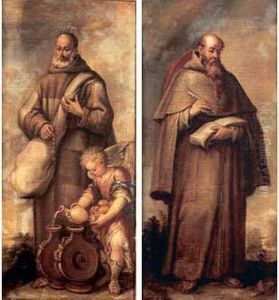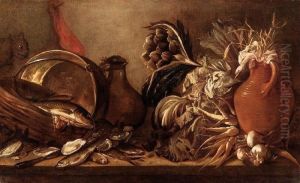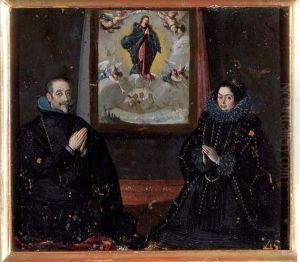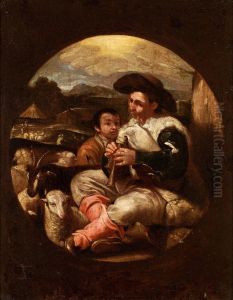Francisco El Mozzo Herrera Paintings
Francisco Herrera the Elder, also known as Francisco de Herrera the Elder or by the nickname 'El Mozzo' (the Mute) due to his taciturn nature, was a prominent Spanish painter and engraver who played a significant role in the Sevillian school of painting during the 17th century. Born in Seville, Spain, in 1584, Herrera belonged to the period of Spanish art history that is often referred to as the Siglo de Oro, or the Golden Age, a time that produced some of Spain's most renowned artists, including Diego Velázquez and Bartolomé Esteban Murillo.
Herrera's style is characterized by its robust and vigorous approach, with a strong use of chiaroscuro and a preference for dramatic contrasts of light and shadow. His work showed both naturalistic and mannerist influences, and he was known for his ability to convey intense emotion and spirituality through his art. He was particularly adept at fresco painting, which was a major medium for public religious art at the time.
Throughout his career, Herrera established a successful workshop in Seville and was highly influential in the development of Andalusian painting. He was also a teacher, and his most famous pupil was his own son, Francisco Herrera the Younger, who would also go on to become a distinguished painter in his own right. The younger Herrera eventually moved to Madrid and then to Rome, which somewhat shifted the artistic focus away from Seville, but the elder Herrera's influence remained significant in the region.
Some of Herrera the Elder's notable works include 'The Last Judgment' and 'The Triumph of Saint Hermenegild', which showcase his dynamic composition and powerful rendering of figures. He was also known for his depictions of saints and other religious subjects, as well as for his work on the altarpieces of various churches.
Francisco Herrera the Elder passed away in 1654 in Seville. Despite his importance during the 17th century, his work was somewhat overshadowed by the subsequent fame of his son and other contemporaries. However, in recent years, art historians have continued to recognize and appreciate his contributions to Spanish art, particularly in the context of the Baroque period.



